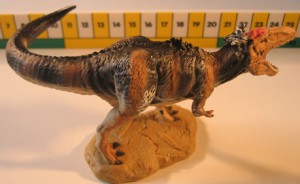Dinosaurs of the Arctic
Belgian Expedition Provides Further Information on Arctic Dinosaurs
The versatility and adaptability of the Order Dinosauria is quite extraordinary. It is certainly a very diverse order, what with tiny plant-eaters such as Micropachycephalosaurus and huge sauropods such as Paralititan at the other end of the size and scale spectrum. Recent discoveries at high latitudes in northern Canada have shown that dinosaurs were capable of living in the far north and in cold climates, environments where, perhaps the mean annual temperature was not much above 50 degrees Farhenheit.
Dinosaurs of the Arctic
Now a team of palaeontologists from the Royal Belgian Institute of Natural Sciences (Brussels), have found evidence that dinosaurs roamed the cold regions of northern Asia. A number of Late Cretaceous dinosaur fossils have been discovered in north-eastern Russia including theropod teeth and evidence of nesting sites that indicate that dinosaurs were at home in relatively cold climates.
The fossils have been found in the valley of the Kakanaut River, the strata has provided a wealth of Late Cretaceous vertebrate fossils, dinosaur such as hadrosaurs, tyrannosaurs, ankylosaurs and dromaeosaurs are represented. The Kakanaut Formation has not yielded any small reptiles or amphibians (presumed to be cold-blooded). It seems that the climate was just too cold for them. Dinosaurs seem to be well adapted to this high latitude ecosystem, one dominated by polar conifer forests. The presence of egg shells indicate that these animals were not migrants but possibly permanent residents, although there is some doubt over the evidence supporting this theory.
Even accounting for shifting continents, these dinosaurs from the Kakanaut Formation (Maastrichtian Faunal stage), would have lived at a latitude of over 70 degrees, putting them well inside the Arctic circle.
A Model of a Feathered Tyrannosaur – Feathered Polar Dinosaurs

One of our field rulers provides scale. Polar tyrannosaurids were probably feathered to help insulate their bodies against the cold.
Picture credit: Everything Dinosaur
Feathered Dinosaurs
The photograph (above) shows a model of a feathered dinosaur. Many polar dinosaurs including tyrannosaurs were probably feathered to help insulate their bodies against the cold.
Everything Dinosaur sells a range of feathered dinosaur models and figures, many of which are associated with palaeoenvironments that represent high latitudes. For example, take a look at the: CollectA Prehistoric Life model range.
The Arctic may have been warmer 68-65 million years ago compared to today but it would still have had freezing winters and darkness for a good part of the year as the sun dipped below the horizon. However, in summer there would be periods of almost 24-hour sunlight, an ecosystem “boom” time with vegetation growing 24-hours a day. A rich environment dinosaurs seem equipped to exploit.
The research paper from the Belgian team has been published in the scientific journal Naturwissenschaften.
To read the article on the Canadian fossil finds indicating dinosaurs living on the American continent at high latitudes: North American Arctic Dinosaurs.

